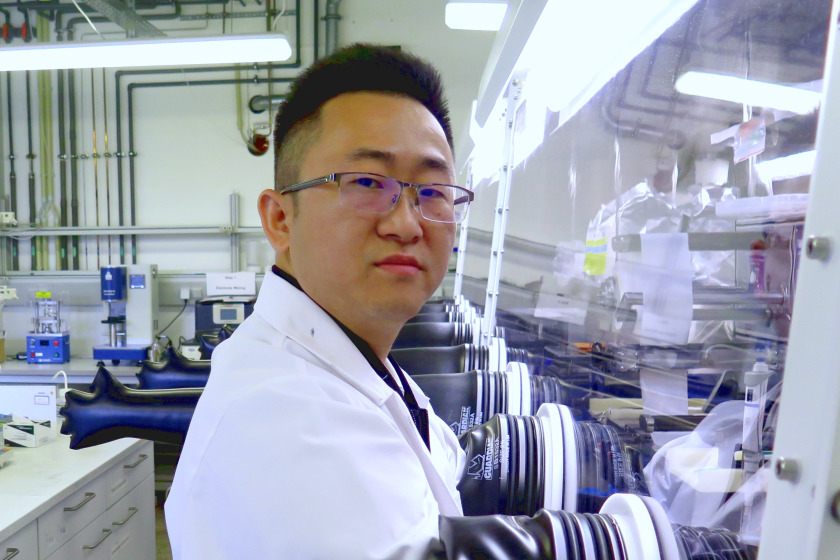Humboldt Fellow joins HZB for battery research

Dr. Wenxi Wang specialises in the design of organic electrodes for lithium-sulfur and zinc-ion batteries and investigates interactions between ions and active materials. © arö/HZB
Dr. Wenxi Wang is working in the team of Prof. Yan Lu as Humboldt Foundation postdoctoral fellow. He studied at the Southern University of Science and Technology in Shenzhen, China, and completed his doctorate at the King Abdullah University of Science and Technology in Saudi Arabia. He specialises in the precise design of organic electrodes for lithium-sulfur and zinc-ion batteries and the investigation of the interactions between ions and active materials.
"At Helmholtz-Zentrum Berlin I find excellent conditions to deepen my research," says Wenxi Wang. Prof. Yan Lu's group has extensive experience in the synthesis and characterisation of novel electrode materials and state-of-the-art infrastructures for battery research. In addition, the X-ray source BESSY II at HZB offers a variety of spectroscopic methods to analyse electrochemical reactions in real time.
Lithium-sulfur (Li-S) batteries are considered one of the most interesting technologies to replace lithium-ion batteries due to their extremely high energy density and cheap starting materials. However, their performance still falls far short of expectations due, in part due to polysulfide intermediates that form during charging cycles. Porous host materials can trap such polysulfides, improving the energy density and lifetime of Li-S batteries. "My research project focuses on the precise design of organic-based host materials with suitable pore sizes and functional groups (Covalent Organic Frameworks, COF) to enable high-performance Li-S batteries and deepen our understanding of their mechanisms," says Wang.
arö
https://www.helmholtz-berlin.de/pubbin/news_seite?nid=24846;sprache=en
- Copy link
-
Bright prospects for tin perovskite solar cells
Perovskite solar cells are widely regarded as the next generation photovoltaic technology. However, they are not yet stable enough in the long term for widespread commercial use. One reason for this is migrating ions, which cause degradation of the semiconducting material over time. A team from HZB and the University of Potsdam has now investigated the ion density in four different, widely used perovskite compounds and discovered significant differences. Tin perovskite semiconductors produced with an alternative solvent had a particular low ion density — only one tenth that of lead perovskite semiconductors. This suggests that tin-based perovskites could be used to make solar cells that are not only really environmentally friendly but also very stable.
-
Joint Kyiv Energy and Climate Lab goes live
Helmholtz-Zentrum Berlin and the National University of Kyiv-Mohyla Academy established on 27 November a Joint Energy and Climate Lab.
-
How carbonates influence CO2-to-fuel conversion
Researchers from the Helmholtz Zentrum Berlin (HZB) and the Fritz Haber Institute of the Max Planck Society (FHI) have uncovered how carbonate molecules affect the conversion of CO
2 into valuable fuels on gold electrocatalysts. Their findings reveal key molecular mechanisms in CO
2 electrocatalysis and hydrogen evolution, pointing to new strategies for improving energy efficiency and reaction selectivity.
